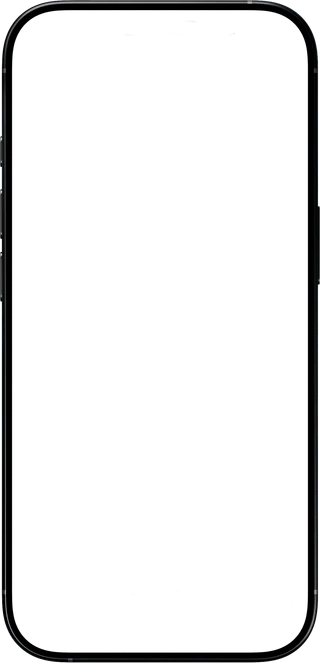Inattentive ADHD
Characterized by chronic inattention, forgetfulness, and disorganization, Inattentive ADHD lacks the hyperactive or impulsive traits people usually associate with ADHD.

From ADD to ADHD Inattentive
Inattentive ADHD used to be called ADD. It first appeared in the 1980 edition of the Diagnostic and Statistical Manual of Mental Disorders (DSM III) to describe children who struggled with focus and organization but did not show the fidgeting and impulsivity people usually associate with ADHD. In 1987 the term was folded under the broader name ADHD, and by the 1990s the inattentive subtype was clearly defined.
Because the signs are quieter (drifting off in class, seeming forgetful, or moving slowly through chores) this type is often harder to spot, especially in girls. What looks like shyness, daydreaming, or being “in their own world” may actually be inattentive ADHD.


Common Challenges
Inattentive ADHD in Girls
Girls are more likely to present with inattentive type than hyperactive type.
- Feeling worried, stressed, or down
- Acting goofy or seeming “spacey”
- Shy or distracted
- Difficulty keeping close friendships
- Perfectionism and self-criticism
- Daydreaming in class

Coach Tanika
Many of the girls I coach work so hard to hide their struggles. Once they have support, the relief is huge.
Inattentive ADHD vs Just Being Distracted
All kids lose focus sometimes. The difference with inattentive ADHD is how often it happens, how long it lasts, and how much it gets in the way of daily life.

Whether it's ADHD or distraction, we give
daily support that keeps kids on track.

Coach Tamsin
Whether it's ADHD or distraction, we give daily support that keeps kids on track.
Practical Parenting Tips
for Inattentive ADHD

Create consistent routines
Kids with inattentive ADHD often can't create structure internally, but they thrive when routines are embedded in their surroundings [4]. A visible homework station, color-coded folders, or an after-school ritual like snack → homework → break can reduce stress and increase follow-through.
Praise immediately, not later
Kids with ADHD respond best to immediate praise [2]. Notice and name the effort: "I like how you stuck with that problem even when it was tricky." This builds motivation far better than pointing out mistakes.
Break tasks into small steps
Research shows kids with ADHD often stumble not on ability, but on hidden steps [2]. For example, "do homework" may actually involve finding a pencil, opening the book, and remembering the page. You can help by breaking tasks into those smaller steps so your child isn't derailed at the very start.
Model organization
Talk through your own habits out loud: "I'm writing this on the calendar so I don't forget." Studies on parental modelling show that when kids hear you narrate strategies, they learn how to use those tools for themselves [4].
Teach "external brains"
Children with inattentive ADHD struggle with working memory [5]. Instead of expecting them to remember steps, give them tools that hold the memory for them: a morning checklist on the wall, a sticky note on the lunchbox, or an alarm that says "pack your bag."
Make learning active
Studies in cognitive psychology demonstrate that retrieval practice (recalling information instead of rereading it) keeps attention alive and strengthens memory [3]. Instead of "read the chapter again," try "tell me three things you remember" or "quiz me on it."
Coaching for
Inattentive ADHD
Children with inattentive ADHD thrive when they have daily guidance and steady structure. This is what coaching provides.


Coach Mercia
We walk alongside students each day, turning scattered efforts into steady progress.


“We are slowly seeing improvement in our daughter’s time management!”
“I am so thankful for my daughter’s coach, Mercia. She has gone out of her way to tailor the coach bit program to meet her needs. As a senior in high school who was recently diagnosed with inattentive ADHD, she has so much to learn . Mercia is incredibly patient with her while also pushing her to do the things that don’t come naturally to her. Before partnering with Mercia I felt so overwhelmed. It is so wonderful to have someone else on our “team” helping our girl learn the skills she needs to be successful. I couldn’t appreciate Mercia more!”
DSM-5 Diagnostic Criteria
The DSM-5 lists the criteria doctors use to diagnose ADHD
To meet criteria teens must:
- 1. Display six or more symptoms (five if age 17+) that clearly interfere with daily functioning
- 2. Symptoms have persisted at least six months
- 3. Symptoms appear in two or more settings (home, school, social)
Symptoms of Inattentive Type
- Often fails to give close attention to details or makes careless mistakes in schoolwork, work, or other activities.
- Often has difficulty sustaining attention in tasks or play activities.
- Often does not seem to listen when spoken to directly.
- Often does not follow through on instructions and fails to finish schoolwork, chores, or duties.
- Often has difficulty organizing tasks and activities.
- Often avoids, dislikes, or is reluctant to engage in tasks that require sustained mental effort.
- Often loses things necessary for tasks or activities (e.g., schoolwork, pencils, books).
- Is often easily distracted by extraneous stimuli.
- Is often forgetful in daily activities.


ADHD Screening Assessment
Wondering if your child may have Inattentive ADHD?
Our research-backed assessment uses the Conners-4®, a gold-standard tool trusted by psychologists and pediatricians worldwide.
Designed for children and teens ages 6 to 18, the assessment is conducted by our in-house psychometrist. You'll receive a detailed report that provides a clear picture you can share with your doctor or school.
References
[1] American Psychiatric Association. (2013). Diagnostic and statistical manual of mental disorders (5th ed.). Arlington, VA: American Psychiatric Publishing.
[2] Barkley, R. A. (2015). Attention-Deficit Hyperactivity Disorder: A Handbook for Diagnosis and Treatment (4th ed.). New York: Guilford Press.
[3] Brown, T. E. (2005). Attention Deficit Disorder: The Unfocused Mind in Children and Adults. Yale University Press.
[4] DuPaul, G. J., & Stoner, G. (2014). ADHD in the Schools: Assessment and Intervention Strategies (3rd ed.). Guilford Press.
[5] Rapport, M. D., Orban, S. A., Kofler, M. J., & Friedman, L. M. (2013). Do programs designed to train working memory, attention, and cognitive control enhance functioning in children with ADHD? Clinical Psychology Review, 33(8), 1237–1252. https://doi.org/10.1016/j.cpr.2013.08.005
[6] Sonuga-Barke, E. J., Brandeis, D., Cortese, S., Daley, D., Ferrin, M., Holtmann, M., ... & European ADHD Guidelines Group. (2013). Nonpharmacological interventions for ADHD: systematic review and meta-analyses of randomized controlled trials of dietary and psychological treatments. American Journal of Psychiatry, 170(3), 275–289. https://doi.org/10.1176/appi.ajp.2012.12070991